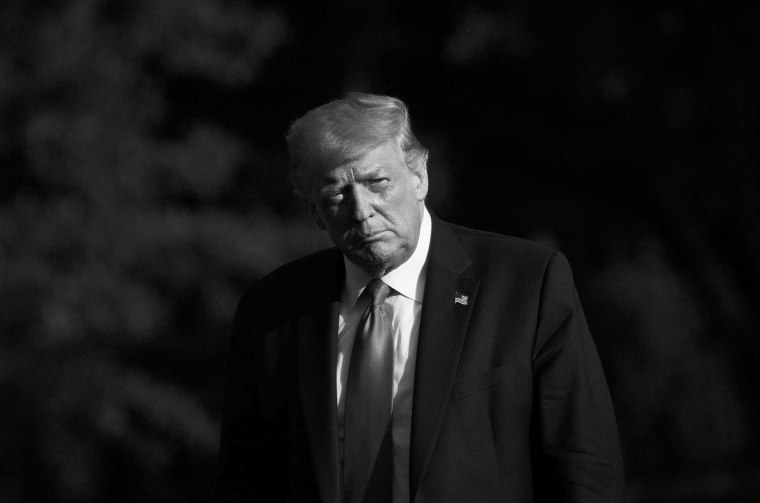WASHINGTON — President Donald Trump says Joe Biden wants to "abolish the suburbs." But what he appears to mean is that Biden wants to stop suburban segregation.
Trump bases the claim on the presumptive Democratic nominee's support for an Obama-era rule designed to combat racial discrimination in housing.
He started off slow.
"You’re going to abolish the suburbs with this," Trump said in the Rose Garden Tuesday. On Wednesday, he tweeted that Biden wanted to eliminate a long list of U.S. institutions and communities, including "Suburbs" and "the American Way of Life."
By Thursday, he had a full head of steam, arguing that local agencies should get federal housing subsidies even if they refuse to desegregate.
"The Democrats in D.C. have been and want to at a much higher level abolish our beautiful and successful suburbs by placing far-left Washington bureaucrats in charge of local zoning decisions," Trump said at a White House event. "Our plan is to protect the suburbs from being obliterated by Washington Democrats, by people on the far Left that want to see the suburbs destroyed — that don’t care. People who have worked all their lives to get into a community and now they’re going to watch it go to hell."
What Trump's political calculation lacks in sophistication, it makes up for in anachronism, both in terms of a "white flight"-era concept of suburbs and in terms of the segregationist rhetoric it echoes. Instead of promising to fight the federal government by standing in the schoolhouse door, he's vowing to use the power of the taxpayer to bar entry into gated communities.
"His campaign sounds more like George Wallace than Ronald Reagan," Democratic strategist Michael Starr Hopkins said. "His message is clear: 'Elect me and I’ll keep Black people out of your neighborhoods and out of your schools.'"
Trump may think that sounds scary to white suburban swing voters. But they have been fleeing his party — in part because of racism — and their departure threatens both his re-election hopes and the chances that Republicans will keep control of the Senate.
An NBC News/Wall Street Journal poll released Wednesday showed Biden with an 11-point lead over Trump among registered voters nationally, and a Quinnipiac survey released the same day showed Biden with a 15-point margin. By a 62 percent to 33 percent margin, suburban voters told Quinnipiac that Biden would do a better job than Trump of handling the coronavirus crisis.
"The suburbs are a lot more worried Trump will kill them with his competence than Biden will kill them opposing racism," said Stuart Stevens, a longtime GOP strategist and author of the forthcoming book "It Was All a Lie: How the Republican Party Became Donald Trump."
Watching Trump talk about the issue is like playing a documentary on the civil rights movement in reverse slow motion. His "abolish the suburbs" slogan tells a lot about the way he thinks about the world — and the way he thinks voters do — as he scrambles for a foothold in his re-election bid.
To win, he has to recapture some of the white suburbanites who voted more against Hillary Clinton than for him. His approach is a caricature of a campaign to convince them that he is the only thing standing between them and the destruction of some retro 1950s idyll of white suburbia.
Those are Trump's words: "abolish the suburbs." They build on his promise to restore "law and order." And they sound like 1966 Maryland Democratic gubernatorial nominee George P. Mahoney, a segregationist whose slogan was, "Your home is your castle, protect it."
Back then, Maryland suburbs outside Baltimore and Washington were experiencing an influx from "white flight." Now, Montgomery and Prince George's counties, which sit adjacent to the nation's capital, are majority-minority and have median household incomes well above the national average.
Of course, there's no standard definition of the word "suburbs."
"Obviously definitions of terms such as suburbs are social constructions or deliberate abstractions, focusing attention on some aspects of suburbs and not others," Ann Forsyth, a professor of urban planning at Harvard University wrote in 2013. "Which aspects are focused on depends in part on the aims of the authors — which can be quite varied."
But if they can generally be looked at as areas around major metropolitan areas with more wealth and less housing density, it is accurate to say the racial composition of suburbs has changed significantly over time. In 2018, Pew reported that the white share of the population in suburban counties had fallen 8 percent, to 68 percent, since 2000.
At the same time, communities within suburbia remain segregated — for a complex set of reasons. Obama's policy, and Trump's effort to defeat it, are evidence of that.
But Trump is a master of sloganeering. In just three words, he encapsulated the argument that white suburbanites should be afraid that their neighborhoods will be destroyed if nonwhites are allowed to move in down the street.
And yet what may be most curious about Trump's message is that he is delivering it at the same time a super PAC supporting him is attacking Biden for trying to stop busing plans designed to desegregate schools decades ago. The super PAC seems to get that both Black voters and some whites would be turned off by Biden's old stance on limiting the methods of school integration.
But the combination only underscores the point that Biden has traversed the same path as many conservative-to-moderate whites over the course of time, while Trump, who was sued for housing discrimination in the 1970s, is still effectively fighting the very idea of integration.

